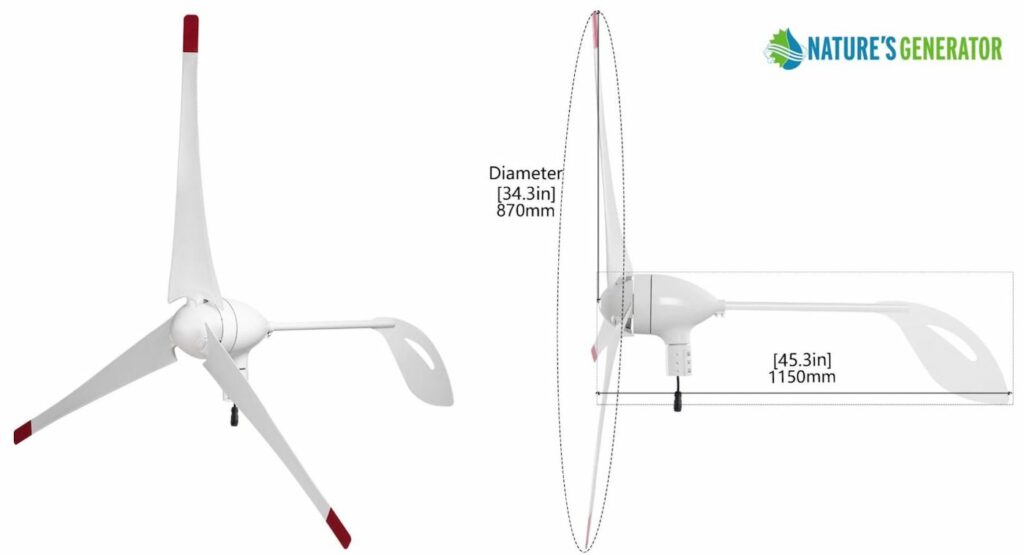Now, more than at any other time in history, people are looking for ways to lessen or even eliminate their carbon footprint on the world. Limiting the carbon footprint is being accomplished by harnessing the power of natural resources to help eliminate the need for power sources that emit an excessive amount of pollution.
Wind power has been used since before the term “off-grid” living was coined. It was used by western settlers in the early 1800s to power their sawmills, help grind grain, and pump water. While the appearance and technology of wind power have changed, the premise is still the same.
This article will learn how to begin moving your life off-grid using wind power for your day-to-day energy needs.
Why Live Off-Grid?
You may be wondering why anyone would want to live “off-grid.” Perhaps the image that is conjured in your mind is of an individual living without the use of any modern-day conveniences. You may even imagine the struggle to survive in our technologically advanced world.
Many people choose to live off-grid or semi-off grid, and they have various reasons for this decision. Some of the most common reasons people choose to live off-grid are:
The desire for self-sufficiency: Many people do not like feeling like their livelihood is dependent upon others. Because of this, they may choose an off-grid lifestyle that allows them to be solely dependent on themselves.
Limiting their carbon footprint: When you rely on natural resources and fossil fuels to power your everyday lifestyle, you leave a carbon footprint. If you were wondering, a carbon footprint is a mark on the world that does not disappear or heal.
Satisfaction: There is a significant level of satisfaction that can be gained by no longer being reliant on fossil fuels and others for day-to-day survival. While it may seem like a rough way to live, many people find joy in living off-grid.
Off-grid living isn’t for everyone, but according to Big Rentz, over 250,000 people in the U.S. live off-grid.
Can You Live With Only Wind Power?
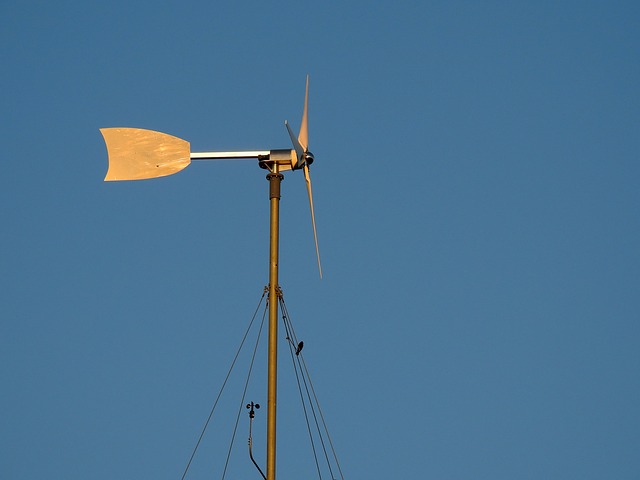
When you decide to go off-grid, you need to determine which natural power source will be the best and most efficient.
For many, the wind is an amazing natural resource that you can use for power. As a result, several states are moving toward using wind power for electricity.
If you plan to use only wind power to go off-grid, you may face a challenge in doing this. As you know, the wind is extremely difficult to predict, and it does not always produce the same amount of energy.
Because of this, you may not be able to store enough energy from wind power to sustain your lifestyle fully and will need to have an alternate power source.
Types of Wind Power
Before diving into the world of wind power, you need to have a firm understanding of the types you may be able to use. Two different types of turbines can be used: Horizontal Axis and Vertical Axis.
Horizontal Axis Wind Turbines (HAWTs)
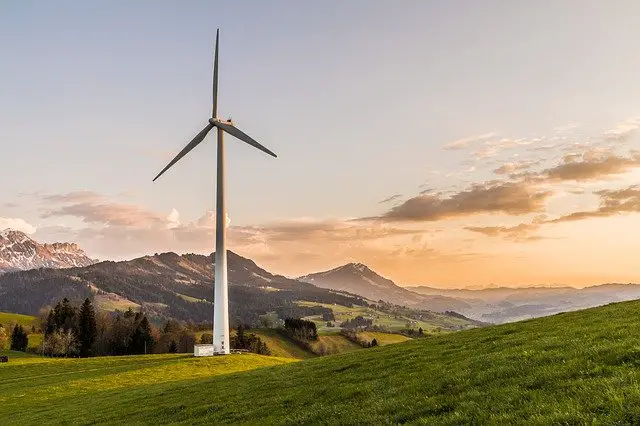
This type of wind turbine is the most popular version used to gather wind energy. These turbines are characterized by two or three blades that spin on a rotor when the wind catches them.
Depending on where you live, you may see this type of turbine in open fields or even in bodies of water as they are typically used by industry.
For example, I travel through Indiana on occasion around one part of the highway lies huge wind turbines that span for miles. I found that this is the Fowler Ridge Wind Farm, which is one of the largest onshore wind farms on the planet. It uses horizontal axis wind turbines.
HAWTs are also commonly used for home use and can be installed on your roof or standalone on your property.
An example of a residential HAWT is the Nature’s Generator Powerhouse Wind Turbine (seen below).
This small HAWT can be used with or without solar panels to recharge the battery within the Powerhouse generator.
The idea is to charge with solar during the day while the turbine works at night to continue producing power for the battery.
Vertical Axis Wind Turbines (VAWTs)
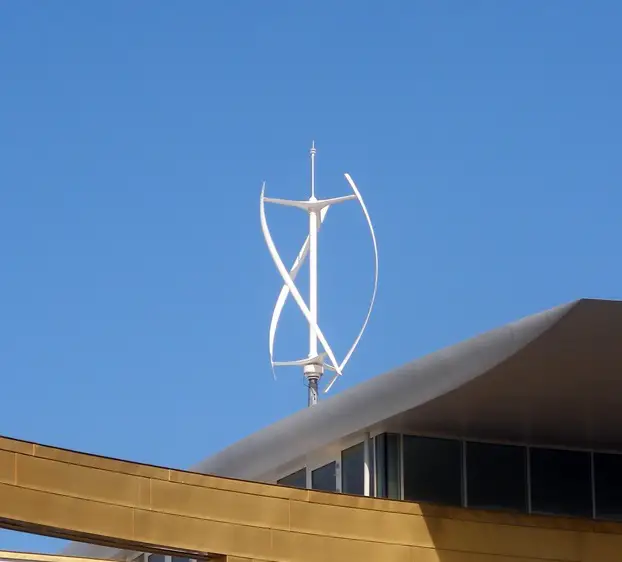
First off, this type of wind turbine is meant for use in areas where the wind direction is highly variable.
Unlike horizontal wind turbines, vertical axis wind turbines gather wind from all directions. This typically makes them more useful than HAWTs in densely populated areas since they have a better tolerance to wind turbulence.
Although both turbine styles can be used on your rooftop, VAWTs tend to be the more visually appealing option over HAWTs since they are usually more compact and require less elevation.
What You Should Know
When you decide to go off-grid with wind power, there are many things you need to take into consideration before beginning the venture.
While wind power can help lessen your carbon footprint, it is not as simple as setting up a turbine mechanism. Some things that need to be considered are:
Loud
From a distance, wind turbines appear majestic and quiet. However, if you ever have an opportunity to get up close to a wind turbine, you will quickly learn they can have an annoying sound that takes a while to get used to, if ever.
The sound is not loud and obnoxious, but it is a constant swooshing sound, paired with the mechanical sound of the machine operating the turbine.
For some, the rhythmic and methodical sound may be somewhat relaxing, while others will not function with the constant sound. The level of sound you are comfortable with is a personal decision to use a wind turbine.
Harmful to Wildlife
Wind turbines can certainly limit our carbon footprint, but they can have detrimental impacts on the environment. Not only can they contribute to the noise pollution level, but they also impact wildlife.
Bats and birds are most impacted by wind turbines. Although this generally refers to wind farms with multiple large turbines, it is still important that you carefully survey and observe the location in which your small turbine(s) will be placed.
For example, when scoping out the areas where you want to put a turbine, you can make sure that there are no bird nests or potential bird-nesting areas in these locations.
While you cannot rule out all mishaps, you may be able to prevent some from occurring.
Inconsistent
The power you get from a wind turbine can be quite inconsistent, which means you will likely need a backup power source.
Because turbines are dependent on the wind, there may be days that very little energy is harnessed, while on other days, you will collect an excessive amount of energy.
High Upfront Cost
Many states have started giving incentives for using wind power, which means there could be substantial rebates for installing a wind turbine on your property. While this can be enticing, you must remember it is a rebate, which means you will need to pay upfront before seeing any returns.
The upfront cost depends on the size and number of turbines you plan to install on your property.
How much does a small wind electric system cost?
According to the AWEA, small wind energy systems cost from $3,000 to $5,000 for every kilowatt of generating capacity. If you intend to use wind power as your primary source of electricity, the cost ranges from $15,000-$75,000 (before state and federal incentives) for the project.
Before beginning the project, you may wish to determine what incentives are available in your state to determine if it is an economically sound decision.
Appearance
Let us face it. A giant metal structure with propelling blades at the top is not likely to be aesthetically pleasing. If you have neighbors close by, you may wish to get their take on the idea before beginning construction.
You also need to consider if you will ever be interested in selling your property. While a wind turbine may not bother you with its appearance, potential buyers could be turned away.
Space
When you begin installing a wind turbine, you need to make sure you have adequate space to install the structure. Wind turbines appear to be rather small from a distance, but the actual space required to house a turbine is significant.
Safety guidelines suggest that turbines must be at least 492.1 feet away from any obstacle with blades at least 29.5 feet above any structure. These guidelines have been put in place to ensure the safe operation of wind turbines.
If you do not have a large enough area to house a turbine, it could cause damage to your property.
Considerations When Preparing for a Wind Turbine

After considering all important safety factors, it is time to begin researching and setting up the best wind turbine for your needs. While it may seem simple enough, there are several things to consider before beginning.
Size
Wind turbines come in a variety of sizes. When looking at a turbine for your home, you need to make sure you choose the correct size. To determine the correct size, you will need to figure out how much energy your home uses in a typical year.
Along with determining the amount of energy your home uses in a year, you also need to figure out the average wind speed in the area you plan to install the turbine. The speed of the wind will indicate how much energy can be harnessed from the turbine.
If you choose the incorrect size wind turbine, it will likely be ineffective to harness the most wind energy possible. Not to mention you could put yourself in danger of injury and will likely spend an excessive amount of money unnecessarily.
Location
Once you have decided on the wind turbine size you need for your home, you will want to make sure you have the proper location to have the turbine installed. Again, there must be adequate spacing between and above structures to ensure no damage is done when operational.
Wind turbines are quite easy to place. However, some locations are better than others.
Where should I put a wind turbine?
The most recommended place for a wind turbine is in a high location. Not only will this allow the wind turbine to catch the most wind, but it will also ensure it is not near any items that could obstruct the movement of the blades.
When you prepare to place a wind turbine on your property, you will also want to consider the view. If you live on a smaller piece of property, you may not want your only view of the turbine.
Cost
Deciding to purchase a wind turbine is no small financial venture, so you should enter into the decision thoughtfully.
The upfront cost to install a wind turbine can be quite significant, so you want to make sure you have the proper size and location picked ahead of time. When deciding if wind power is the best option for you, it is also a great time to determine any local or state government incentives.
Is There Enough Wind?
Before installing the wind turbine, you will want to study the wind patterns in your area over a significant amount of time.
However, even with a detailed study, you may miss the mark when determining the amount of wind you can expect at any given time. The wind is unlike other weather forms because it is highly unpredictable.
How much wind do you need for a wind turbine?
For a turbine to begin producing usable energy, the wind speed must be a minimum of 10 miles per hour. Therefore, if you live in a location that produces higher winds frequently, you will likely be more successful.
On the flip side, if you live in a location where winds are lower than 10 miles per hour, a turbine may not be helpful.
How Wind Energy Is Stored
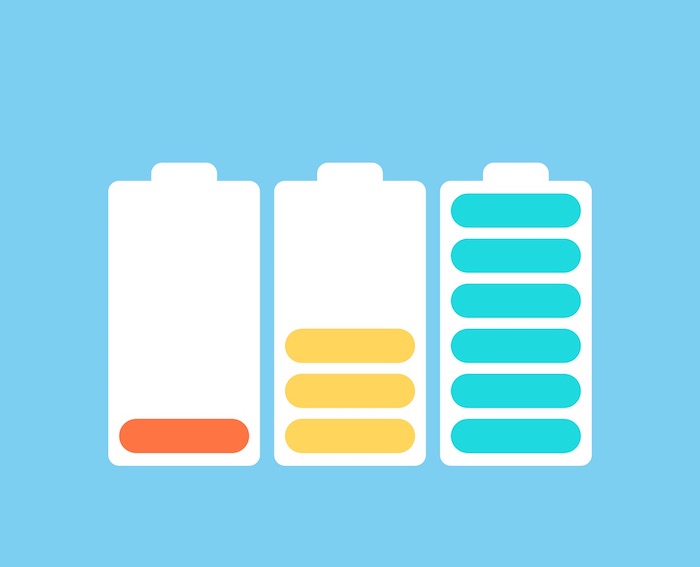
When a turbine produces energy, you may be wondering how it is stored. In industrial settings, the energy is diverted back to a location where it is stored and used accordingly. There are several methods for storing wind energy but battery storage is a commonly-used practice.
The most efficient and cost-effective method for storing wind energy at home is likely electrical battery storage. Not only is this cost-effective, but it is also easier to use when transferring energy from the turbine to the receiving items.
Repairs
Whenever you think about adding an appliance or anything mechanical to your home, you need to consider potential repairs. This is also the case with wind turbines.
It’s important to discuss with your installer about maintaining your wind turbine(s) as well as resources you can use if you need assistance for a malfunctioning turbine.
Energy.gov has some wind system maintenance tips available as well.
Benefits of Wind Power
If you ultimately decide that wind power is the direction you want to go when supplying energy to your home, you should know all the benefits you can expect to reap from installing and using a wind turbine.
Cost-Effective
Over time, wind energy can provide a much lower electric bill for your home. While it won’t send your total to zero, it will likely cut 50%-90% off your electric bill.
Clean Fuel Source
Wind power is considered a clean fuel source because there are no harmful gasses produced from energy production. There is no reliance on fossil fuels to generate power, making wind a sustainable, clean energy source.
Sustainable
Wind, although unpredictable, is a highly sustainable source of energy. There is nothing that needs to be replenished when it is used for power. Because of this, it is considered a sustainable source of energy.
Can Be Built in Pre-existing Areas
Another positive aspect of wind energy is that no special facilities need to be constructed to house a wind turbine. All wind turbines can be placed in pre-existing locations without much hassle. The only thing necessary is the proper amount of space for the turbine to operate safely and efficiently.
Going Completely Off-Grid
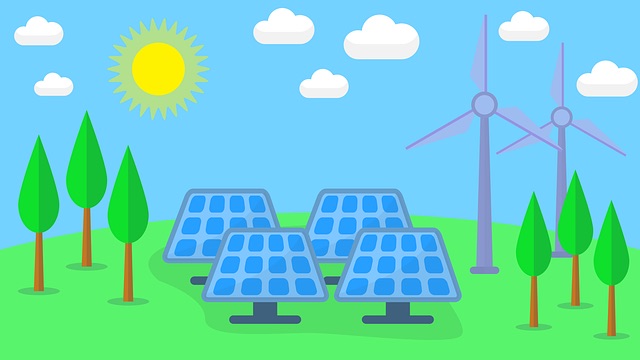
Using wind power to go completely off-grid is highly unlikely because of the unpredictability of the wind. However, you can still live a sustainable life using wind as a resource. Many people choose to use multiple sustainable energy resources to allow them to go fully off-grid.
Suppose you know that wind energy will not be enough to support your entire home and the amount of energy you consume. In that case, it may be beneficial to couple it with solar energy. With multiple sources of sustainable energy, you will be closer to living off the grid.
Going off-grid is appealing to many people for a variety of reasons. However, if you choose wind as your power source, you need to be aware of the pros and cons of this choice and how sustainable this option will truly be in the long term. Wind energy is readily available; however, its unpredictability may make it a challenging option for a fully off-grid lifestyle.
For solar energy options, I have a couple of articles relating to solar generators below. These systems take in solar energy and convert it to usable energy through their batteries and other components.

